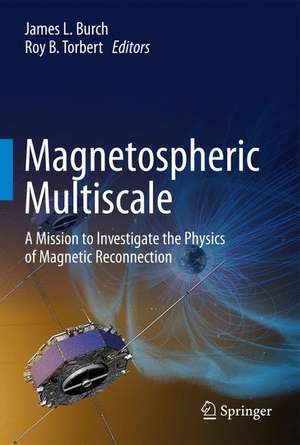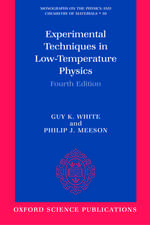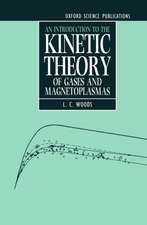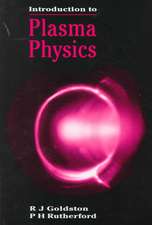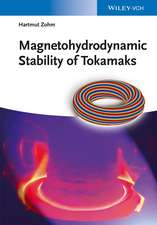Magnetospheric Multiscale: A Mission to Investigate the Physics of Magnetic Reconnection
Editat de James L. Burch, Roy B. Torberten Limba Engleză Hardback – 16 dec 2016
This volume, which describes the MMS mission design, observatories, instrumentation, and operations, is aimed at researchers and graduate students in magnetospheric physics and plasma physics. Researchers using the publicly available MMS data will find it particularly useful.
Previously published in Space Science Reviews, Volume 199, Nos. 1-4, 2016.
| Toate formatele și edițiile | Preț | Express |
|---|---|---|
| Paperback (1) | 417.08 lei 38-45 zile | |
| SPRINGER NETHERLANDS – 5 iul 2018 | 417.08 lei 38-45 zile | |
| Hardback (1) | 447.62 lei 38-45 zile | |
| SPRINGER NETHERLANDS – 16 dec 2016 | 447.62 lei 38-45 zile |
Preț: 447.62 lei
Nou
Puncte Express: 671
Preț estimativ în valută:
85.65€ • 88.85$ • 71.42£
85.65€ • 88.85$ • 71.42£
Carte tipărită la comandă
Livrare economică 24-31 martie
Preluare comenzi: 021 569.72.76
Specificații
ISBN-13: 9789402408607
ISBN-10: 9402408606
Pagini: 745
Ilustrații: VII, 745 p. 495 illus., 437 illus. in color.
Dimensiuni: 155 x 235 x 36 mm
Ediția:1st ed. 2017
Editura: SPRINGER NETHERLANDS
Colecția Springer
Locul publicării:Dordrecht, Netherlands
ISBN-10: 9402408606
Pagini: 745
Ilustrații: VII, 745 p. 495 illus., 437 illus. in color.
Dimensiuni: 155 x 235 x 36 mm
Ediția:1st ed. 2017
Editura: SPRINGER NETHERLANDS
Colecția Springer
Locul publicării:Dordrecht, Netherlands
Cuprins
Preface.- Magnetic Multiscale Overview and Science Objectives.- Magnetospheric Multiscale Science Mission Profile and Operations.- The MMS Observatory.- The Fast Plasma Instrument for MMS.- Hot Plasma Composition Analyzer for the Magnetospheric Multiscale Mission.- The Energetic Particle Detector (EPD) Investigation and the Energetic Ion Spectrometer (EIS) for he Magnetospheric Multiscale (MMS) Mission.- The Fly’s Eye Energetic Particle Spectrometer (FEEPS) Sensors for the Magnetospheric Multiscale (MMS) Mission.- Magnetospheric Multiscale Instrument Suite Operations and Data System.- The FIELDS Instrument Suite on MMS: Scientific Objectives, Measurements, and Data Products.- The Magnetospheric Multiscale Magnetometers.- The Search-Coil Magnetometer for MMS.- The Axial Double Probe and Fields Signal Processing for the MMS Mission.- The Spin-Plane Double Probe Electric Field Instrument for MMS.- The Electron Drift Instrument for MMS.- Active Spacecraft Potential Control Investigation.- Theory and Modeling for the Magnetospheric Multiscale Mission.- Establishing the Context for Reconnection Diffusion Region Encounters and Strategies for the Capture and Transmission of Diffusion Region Burst Data by MMS.- What Can We Learn about Magnetotail Reconnection from 2D PIC Harris-Sheet Simulations?.- Education and Communication for the Magnetospheric Multiscale Mission.
Notă biografică
James L. Burch is Vice-President of the Space Science and Engineering Division of Southwest Research Institute (San Antonio, TX) and Prinicipal Investigator of the Magnetospheric Multiscale (MMS) mission. He is an experimental space physicist investigating various aspects of the interaction of the solar wind with the magnetospheres of the Earth and Saturn and with comets. He has been Principal Investigator for instruments on the NASA Dynamics Explorer spacecraft and the Space Shuttle. Beginning in 1996, he was P.I. of the first NASA Medium - Class Explorer mission (IMAGE), which performed pioneering global, multispectral imaging of plasmas populating the Earth’s magnetosphere. Also starting in 1996 and continuing until 2016, he is P.I. of the Ion and Electron Sensor (IES) on the European Space Agency’s Rosetta mission, which in 2014 became the first mission to rendezvous with and orbit a comet. Dr. Burch received his Ph.D. in space science from Rice University in 1968. He isa Fellow of the American Geophysical Union and in 2010 was awarded the AGU’s Fleming Medal.
Roy B. Torbert is a professor of physics at the University of New Hampshire (UNH) and Director of the SwRI-EOS (Earth, Oceans, and Space) Department, which is located on the UNH campus. He is the Principal Investigator for the Electron Drift Instrument on the CLUSTER (ESA/NASA) mission and has been Co-Investigator on many NASA missions, most recently the Van Allan Probes (RBSP), WIND, and POLAR missions. He has been principal investigator on multiple sounding rocket missions for NASA. Currently, he serves as the Lead Investigator for the FIELDS instrumentation suite for the Magnetospheric Multiscale (MMS) mission, as well as its Deputy Principal Investigator. He received his Ph.D. in physics from the University of California in Berkeley in 1979.
Roy B. Torbert is a professor of physics at the University of New Hampshire (UNH) and Director of the SwRI-EOS (Earth, Oceans, and Space) Department, which is located on the UNH campus. He is the Principal Investigator for the Electron Drift Instrument on the CLUSTER (ESA/NASA) mission and has been Co-Investigator on many NASA missions, most recently the Van Allan Probes (RBSP), WIND, and POLAR missions. He has been principal investigator on multiple sounding rocket missions for NASA. Currently, he serves as the Lead Investigator for the FIELDS instrumentation suite for the Magnetospheric Multiscale (MMS) mission, as well as its Deputy Principal Investigator. He received his Ph.D. in physics from the University of California in Berkeley in 1979.
Textul de pe ultima copertă
NASA’s Magnetospheric Multiscale (MMS) mission is a four-spacecraft Solar Terrestrial Probe mission to study magnetic reconnection, a fundamental plasma physical process in which energy stored in a magnetic field is converted into the kinetic energy of charged particles and heat. The driver of eruptive solar events such as flares and coronal mass ejections, magnetic reconnection is also the process by which energy is transferred from the solar wind to Earth’s magnetosphere. Flying in a tetrahedral formation, the four identically instrumented MMS spacecraft measure the plasma, electric and magnetic fields, and energetic particles in the regions of geospace where magnetic reconnection is expected to occur. With interspacecraft distances varying from 400 km to 10 km and instruments capable of making extremely fast measurements (30 ms for electrons), MMS has the spatial and temporal resolution needed to resolve for the first time the microphysics of the electron diffusion region. Here,the magnetic field and the plasma become decoupled, allowing reconnection to occur. During the first of its two mission phases, MMS targets the dayside magnetopause, where the interplanetary and terrestrial magnetic fields reconnect. In the second phase, MMS increases its apogee from 12 RE to 25 RE and probes the nightside magnetosphere, where energy stored in the stretched field lines of the magnetotail is explosively released in magnetospheric substorms. Launched in March 2015 into a low-inclination elliptical orbit, MMS is now in Phase 1 of science operations.
This volume, which describes the MMS mission design, observatories, instrumentation, and operations, is aimed at researchers and graduate students in magnetospheric physics and plasma physics. Researchers using the publicly available MMS data will find it particularly useful.
Previously published in Space Science Reviews, Volume 199, Nos. 1-4, 2016.
This volume, which describes the MMS mission design, observatories, instrumentation, and operations, is aimed at researchers and graduate students in magnetospheric physics and plasma physics. Researchers using the publicly available MMS data will find it particularly useful.
Previously published in Space Science Reviews, Volume 199, Nos. 1-4, 2016.
Caracteristici
Provides detailed information about the MMS mission design, spacecraft, instrumentation, data system, and operations Discusses the exciting possibilities of using Earth’s magnetosphere as an astrophysical laboratory in which to study the microphysics of magnetic reconnection
